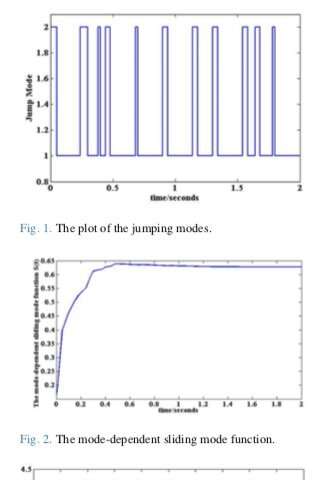April 17, 2019 feature
A sliding mode control scheme for nonlinear positive Markov jumping systems

Researchers at Anhui University in China have recently developed a new method to enable sliding mode control in a class of nonlinear positive Markov jumping systems (MJSs) with uncertain parameters. Their approach is outlined in a paper published in Springer's International Journal of Control, Automation and Systems.
Sliding mode control (SMC) is a control technique that alters the dynamics of a nonlinear system by applying a discontinuous control signal, which forces the system to 'slide' along a cross-section of its normal behavior. In other words, SMC methods are designed firstly to drive a system's states onto a particular surface in the state space, known as the 'sliding surface.' Then, once a system reaches this surface, the SMC scheme tries to keep it within the surface or in the surface's close neighbourhood.
Traditional SMC methods are based on the variable structure theory, which was introduced in the 1950s by a team of Russian researchers. Typically, these methods entail the design of two key components: a sliding surface and a control component.
In recent years, SMC schemes have been the focus of a variety of research studies due to to their simple structure, quick response and high performance. SMC methods are now widely used in a broad range of fields, including as industry, aerospace and robotics.
In their study, the researchers at Anhui University set out to develop a sliding mode control approach for a particular class of nonlinear MJSs. MJSs are stochastic hybrid and dynamic systems that experience transitions from one state to another according to a specific set of probabilistic rules. Recently, these systems have attracted the attention of several researchers, as they offer vast modeling possibilities.
"This paper studies the finite-time sliding mode control problem for a class of nonlinear positive Markov jumping systems (MJSs) with uncertain parameters," the researchers wrote in their paper. "Firstly, a mode-dependent sliding mode surface is designed to guarantee the positiveness and finite-time boundedness of closed-loop MJSs. Then, a suitable finite-time sliding mode controller is given to guarantee the closed-loop MJSs can drive onto the specified sliding mode surface during a given finite-time interval and then maintain on the sliding surface."
In their study, the researchers designed a sliding mode surface and then developed a sliding mode controller that would allow the closed-loop MJS to drive onto this surface during a given finite time interval. Their paper also includes a numerical example, which demonstrates the effectiveness of the design proposed by them.
"Based on the stochastic Lyapunov-Krasovskii functional approach and linear matrix inequalities technique, sufficient conditions on the existence of the finite-time controller are proposed and proved," the researches explained. "Finally, a simulation example is given to illustrate the effectiveness of the proposed method."
More information: Chengcheng Ren et al. Sliding Mode Control for a Class of Nonlinear Positive Markov Jumping Systems with Uncertainties in a Finite-time Interval, International Journal of Control, Automation and Systems (2019). DOI: 10.1007/s12555-018-0793-3
© 2019 Science X Network















